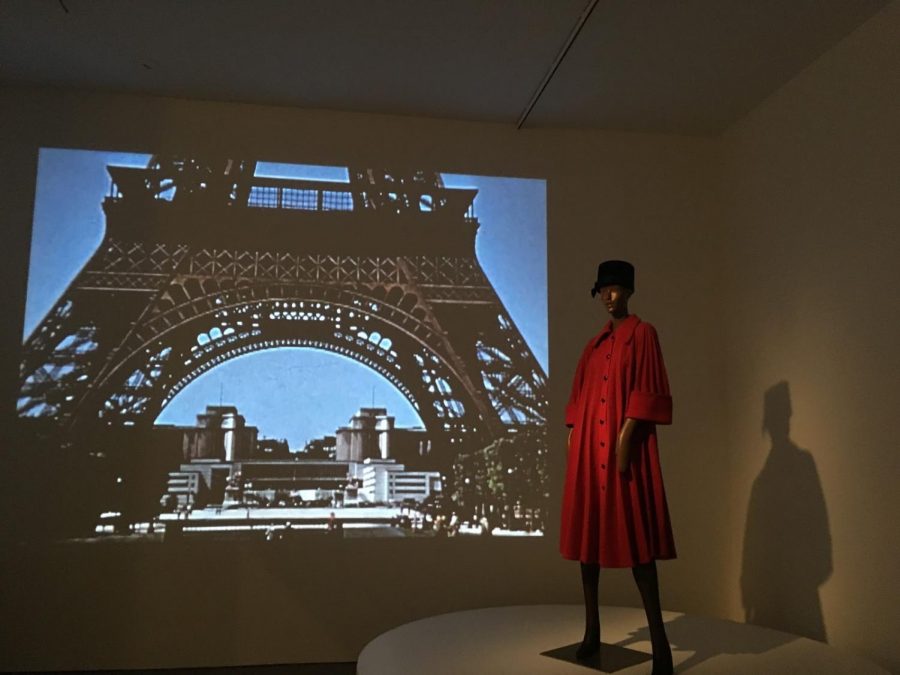The Past’s Future Fashion: A Review of ‘Pierre Cardin’ at the Brooklyn Museum
A model in long red coat positioned in front of a projection of the Eiffel Tower.
From September 18th until January 5th, 2020, the Brooklyn Museum has an exciting new exhibit demonstrating famous French designer Pierre Cardin’s visions of what the future of fashion might look like from the late twentieth century.
The exhibit revolves around various concepts he wanted the future of fashion to look like, along with designs and media that corresponded to the era.
A large part of the exhibit is the ‘Cosmocorps’ designs. They are unisex looks with different zipper and collar designs that represent outerspace fashion. Cardin, on his designs, said, “In 2069, we will all walk on the moon or Mars wearing my ‘Cosmocorps’ ensembles. Women will wear Plexiglas cloche hats and tube clothing, men will wear elliptical pants and kinetic tunics.”
Students at our school have similar predictions for the future: “Clothes might be made out of materials we don’t even know exist right now. It’s definitely going to be something crazy like organic bubble wrap fiber or something,” said Daniela Castro ’20. Her predictions reflect many of the materials Cardin used in his own designs, like plexiglass.
Other students discussed their views on the gender-neutral state of our fashion future. “I think fashion brands exploring unisex fashion is a very realistic idea and very much already happening. All clothes should be made accessible to everyone, as they are such an important part of exploring your identity,” said Ula Pranevicius ’20. Cardin’s dreams of a completely unisex future have already begun filtering into our mainstream culture.
The androgynous movement, as Pranevicius said, has been on the rise in the last twenty years. Other students, however, do not see the same accuracy in his designs. “I don’t think his designs are very accurate because ‘futuristic’ portrayals that I’ve always seen always have a general consensus of what ‘futuristic’ is. That doesn’t mean that lack of accuracy makes the art any less valid or interesting,” said Edie Fine ’21. “His fashion is art, and I think that it’s okay for it to exist primarily as an art piece to view in an exhibit like this one.”
The varying levels of accuracy in his designs are what make the exhibit so interesting. While his designs are definitely eccentric, the museum really highlights the origin of his designs and his career while also showing the influence he had on media and fashion as a whole. The exhibit mixes in movies from his era with similar futuristic designs. For example, one part of the exhibit displays a clip from both ‘Star Trek’ and ‘The Jetsons,’ as a reflection of the influence that Cardin had on the media.
“My favorite part of the exhibit was the way that Cardin’s designs were displayed through different mediums, like TV clips and images that accompanied the pieces that made the exhibit feel more like an immersive experience,” said Fine.The exhibit also reflects some of Cardin’s own inspirations. One of Cardin’s clothing lines was ‘Kinetic Fashion,’ which highlighted movement as part of the design, such that his curved pant bottoms that made it look like the model was on wheels. These designs were inspired by artist Alexander Calder’s mobiles. The blurbs near the exhibit’s art really take the viewer into Cardin’s mindset with examples of Calder’s mobiles and the corresponding Cardin designs.
The exhibit also highlights seemingly smaller aspects of design, like hats. There is a whole wall in the exhibit dedicated to Cardin’s extravagant hat designs. For Cardin, every aspect of design mattered; his hats were especially important to him. He designed many of his hats to reflect medieval armor to reflect a history of centuries of protection and anonymity. The exhibit does a great job of reflecting his passion for accessories and detail through this huge wall, which allows viewers to compare and follow patterns in all his hats.
“I would definitely recommend it to other people. I absolutely love the explosion of 60s and 70s culture, and it’s an amazing representation of how that time influenced art and fashion,” said Fine. “That era was filled with hope for the future, with social movements that helped society charge forward.” Anyone interested in fashion, the late 1900s, or just an unconventional take on art and design should stop by the Brooklyn Museum before January 5th, 2020 (perhaps during winter break) to form their own opinions and ideas for the future of design.
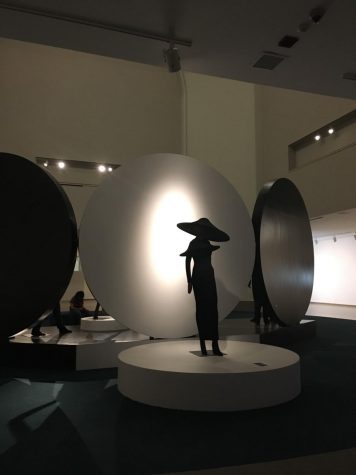
A hat model on a white stand.
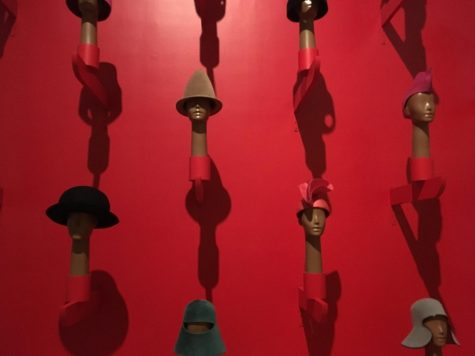
Wall of Hats
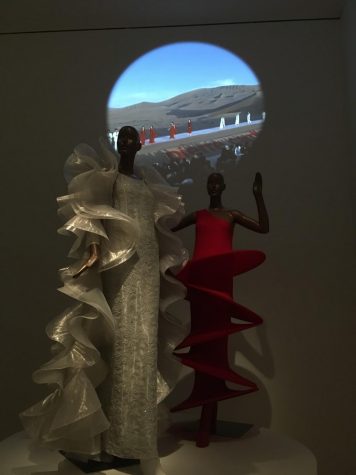
Two models in geometric designs are positioned in front of a clip of a futuristic movie.
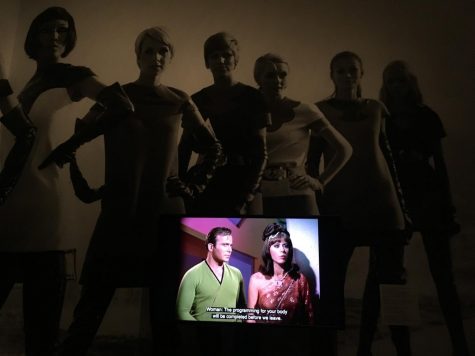
A picture of Cardin’s designs inspiring ‘Star Trek’ costumes along with a television that is playing a clip from the movie.
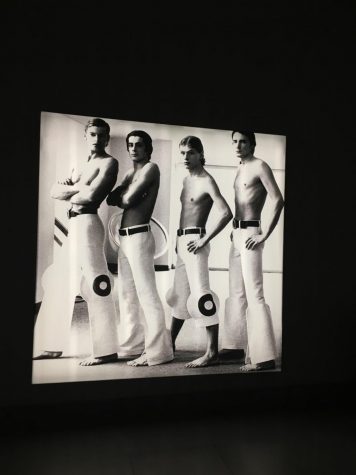
A picture of four male models wearing Cardin’s geometric-accent pants.
Leann Goldberg is an Editor-in-Chief for ‘The Science Survey.’ She thinks journalistic writing is important because it allows the public to stay informed...

